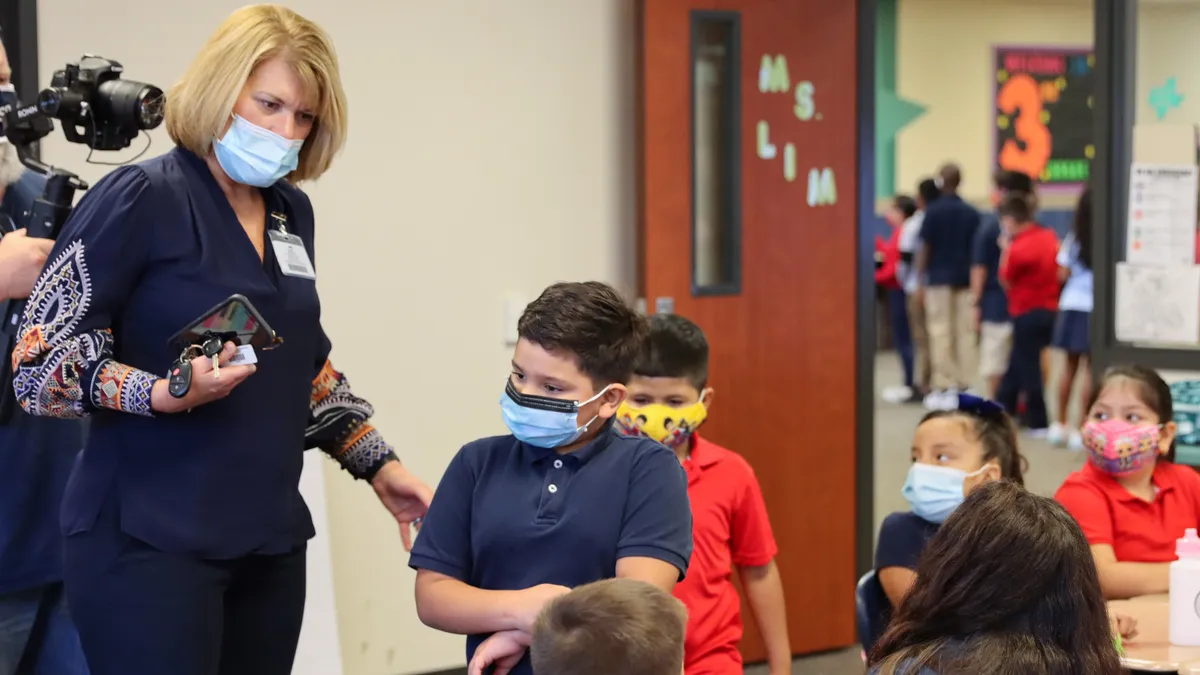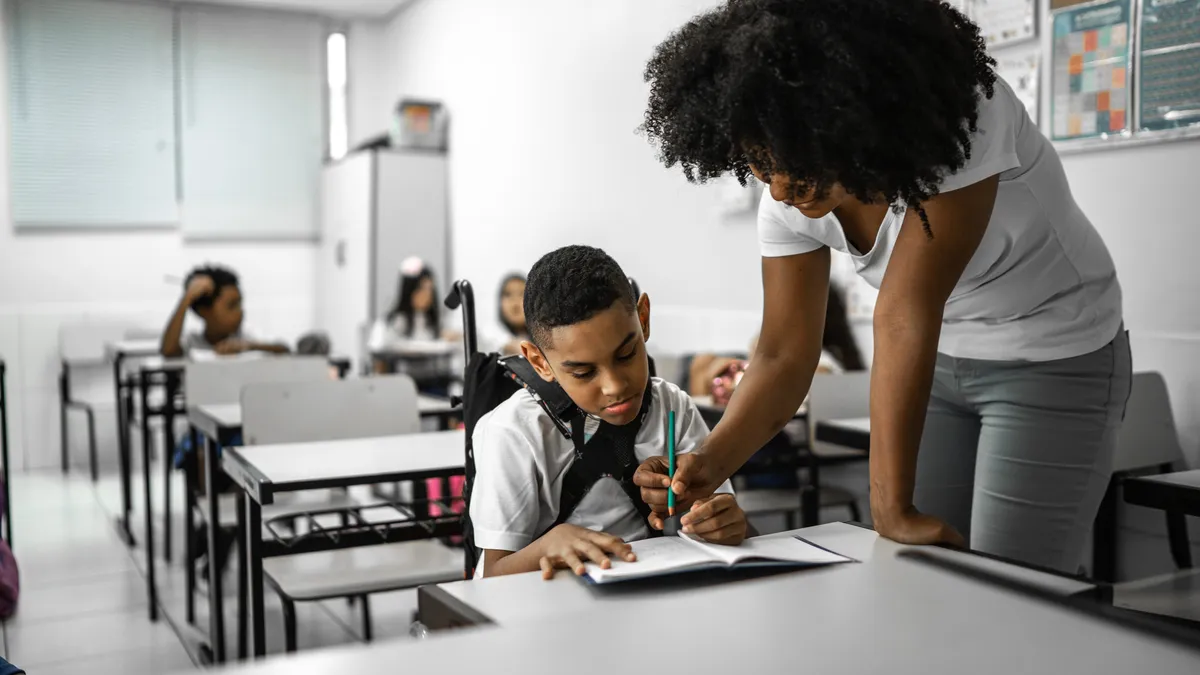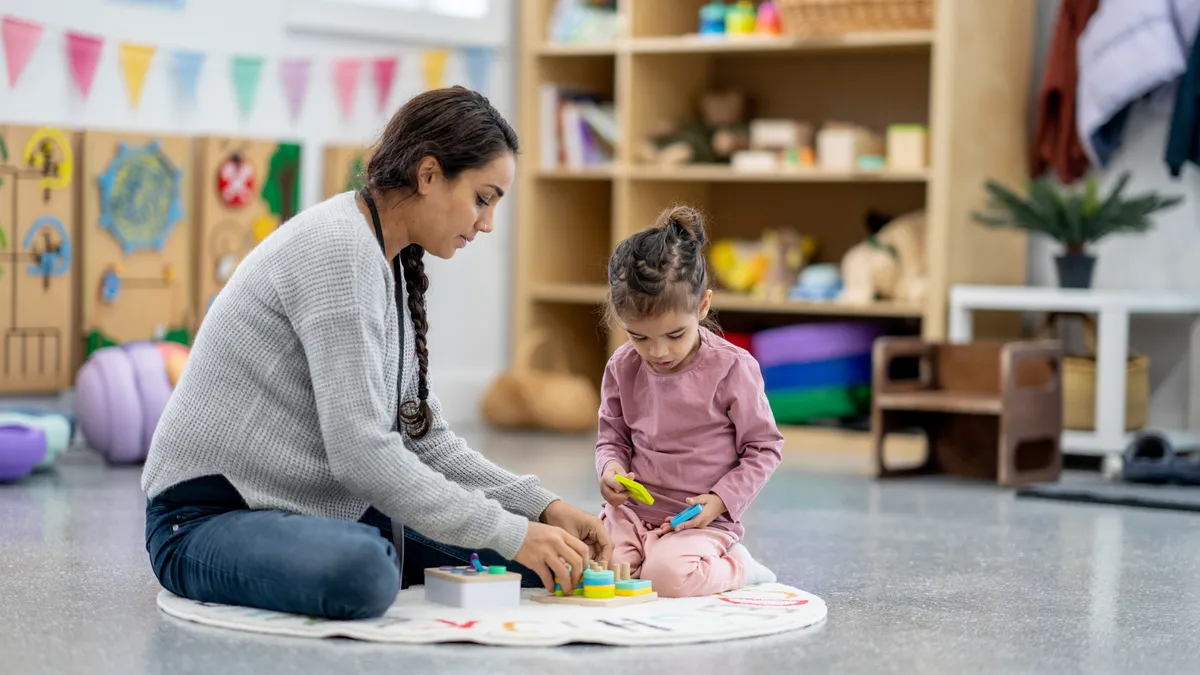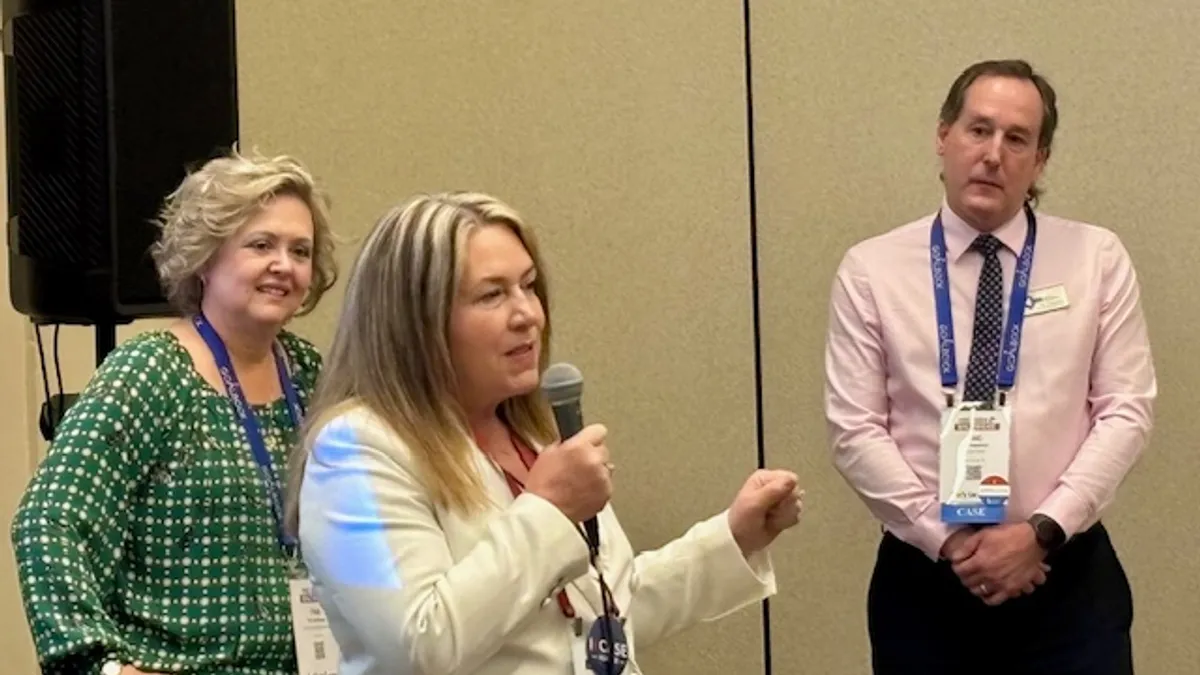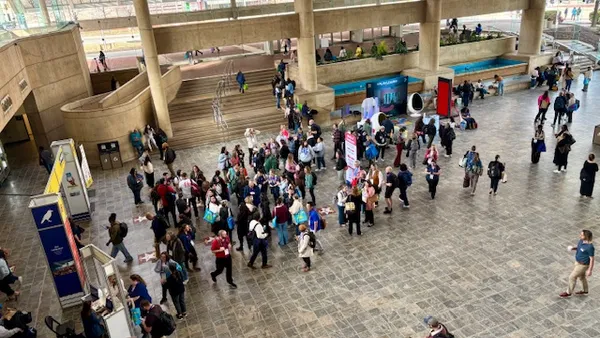Daniel A. Domenech is executive director of AASA, The School Superintendents Association. Jeff Wetzler is co-founder of Transcend Education, a nonprofit focused on innovation in school design.
The growing number of superintendents, building leaders and teachers exiting the education profession is creating a vicious overload on those who remain, as well as on the students who are trying to learn and grow in the communities in which they live. It’s time we rethought the design of school instead of continuing to put more burdens and Band-Aids on a system in distress.
Currently, we ask schools to educate young people. We also ask them to provide solutions to our society’s underinvestment in equitable healthcare, child care, housing, food security, employment, technology access and more.
Schools and the people who work in them, because they care deeply about the children and families they serve, willingly take on more and more of this social burden — often without additional funding or training.
When some students come to school hungry in dirty clothing, the school offers breakfast, lunch and weekend food, and an in-building laundry. If other students don’t have broadband to access their assignments, the school buys hotspots or creates a mobile Wi-Fi bus service. Now, repeat those demands in tens of thousands of schools across an entire system of education.
Circumstances surrounding the pandemic and the challenges that have escalated since February 2020 are immeasurable. Schools have the added responsibilities of COVID-19 testing and monitoring, contact tracing and hybrid and online learning. Meanwhile, school personnel are being threatened, and in some cases, violence has occurred against them. Across the country, some people no longer disagree vocally, but abusively.
No wonder there are mass exits of educators.
Our organizations, AASA, The School Superintendents Association and Transcend, work with thousands of school communities and system leaders across the country. We clearly see that we need to support school communities as they respond to urgent needs and recover from the traumas of the past two years. It is also evident to us that we need to grow our collective efforts to reinvent our overburdened education system as we support response and recovery efforts.
Reinvention needs to start now, not after we’ve dealt with the crisis of the moment. Given the uncertainties of the world in which we live, there will always be a crisis of the moment.
What levers are there for redesigning the systems, structures, places and spaces that children learn? Earlier this year, AASA released An American Imperative: A New Vision of Public Schools, resulting from the Learning 2025: National Commission on Student-Centered, Equity-Focused, Future-Driven Education. Meanwhile, Transcend authored a white paper, 3 Jobs That Matter for School Communities Navigating a COVID World.
Together, these reports outline a bold vision and specific suggestions for designing a different, more reasonable education system where educators, students and families do school in a far more effective, future-focused and community-embedded way.
School reinvention can no longer be schools going at it alone as first responders for the community. Rather, sustainable classrooms and schools must be research-based, deploying the latest science on child development that shows how learning can be designed for each child to have their individual needs met, and community-embedded, activating local assets, values, dreams and partners.
Sound utopian? It’s possible, and it’s already happening now.
Districts like Lindsay Unified in California show what’s possible when we abandon the outdated system of age-based progression and let learners move at their own pace, according to their readiness. Schools like Van Ness Elementary in Washington, D.C., show what’s possible when schools attend to the whole child every day, not just in reactive moments.
As the examples above highlight, partnerships are crucial in helping reinvent school to help young people recover, rediscover and thrive. For far too long, schools have been separated from the assets of communities, even as students crave relevance in their education.
Partnerships also enable schools to extend learning into out-of-school time (OST). Community agencies and after-school partners play a vital role in providing essential services to children and families. AASA and the 50 State Afterschool Network are working together to elevate the #PowerOfPartnerships in OST.
A comprehensive after-school approach, in coordination with the school district, includes academic acceleration and catch-up, career exploration, physical activity and healthy eating, and wraparound and emergency supports for children and families. Reinventing school entails forging the right partnerships to construct not just a reimagined school day, but a reimagined network of systems and supports for young people embedded in communities.
The sheer exhaustion everyone — from students and parents to teachers and administrators — is feeling makes it tempting to hope for a return to pre-pandemic “normal.” But this would return us to the world of added burdens and Band-Aids. This would be the most unreasonable path of all.
Returning to what school was like prior to February 2020 is not an option if we want future-driven education to occur in our country.
Reinventing our education system is the great challenge and great opportunity on the other side of today’s crises. We owe it to all adults and children in schools not to waste it.







